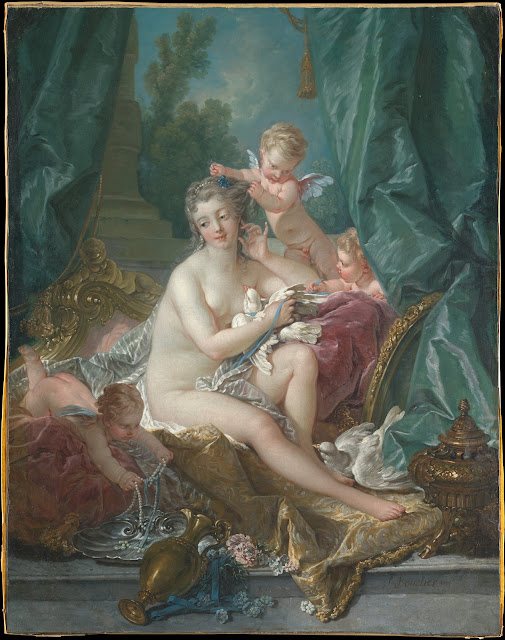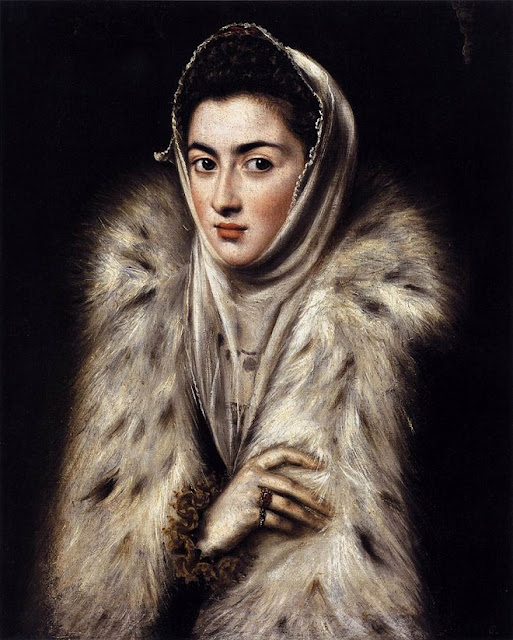The Enlightenment:
During the 1700s new ideas and philosophies emerged in the wake of the Humanist thinkers of the Renaissance. The Enlightenment was a time in which revolutionary ideas were put forth by men such as George Berkeley, Immanuel Kant, and John Locke, in order to challenge the feudal system in place at the time.
They and many others questioned the basis of long-held traditions and foundational beliefs, calling to question inequality and the divine right of kings. If men were created equal in the eyes of God, how then could a monarchy justify its absolute authority over the lives of its people? While this movement was largely concerned with the rights of European men, the ripple effect it had would later create the waves needed to start many human rights movements in our own recent history.
As the middle class continued to grow, thinkers of the Enlightenment turned their attention to the flagrant spending of the aristocracy, living carefree lives in their posh estates while the lowest and largest class of people struggled to survive the pervasive effects of violent wars and religious inquisitions. The French aristocracy represented only a fraction of the population, yet held 90 percent of the country's wealth.
Rococo:
The Rococo style, an art movement from France in the 1740-70s, seems to embody the frivolity of the upper class, created almost solely for the rich and their immoral whims. No longer focused on the drama of the Baroque, which largely came out of the suffering of the Thirty Years War, Rococo was rich with fantasy, its subject matter often dreamy ideas of a bygone era of mythological love and sensuality. It was a reflection of the needless wealth and disconnected audience it represented, a small group of people who chose to sequester themselves in the finery of their sheltered existence rather than look at the reality of their societies.
Suffering was for the poor, and Rococo art was an excellent mode to transport this idea--and its audience--to a neverending dream of pure bliss.
Francois Boucher, The Toilette of Venus, 1751, oil on canvas, 108 x 85 cm (42.5 x 33.4 in), (Manhattan, New York City, USA)
Francois Boucher (1703-1770) was one such artist in this movement, his patron none other than the legendary Madame de Pompadour, mistress to King Louis XVI. Boucher often depicted erotic scenes that would eventually garner him much criticism, yet the madame was a devoted fan of his, solidifying him as a master of the style.
"The Toilette of Venus" is a perfect example of the Rococo. We see the goddess Venus, painted in the likeness of Boucher's patron, lounging after a bath as cherubs tend to her every whim. Several traditional symbols of Venus are scattered throughout, such as the pearls and the silver shell shown in the bottom-left of the painting. Boucher originally painted it to decorate Madame de Pompadour's bathing apartments, one of several works he did for her at the time. It is reflective of a woman whose life was not dictated by unseemly things such as suffering or sadness.
My personal feelings about this piece are that it is lovely, but highly unrealistic, very much the portrait of divinity.
The scene is typical of Rococo style, a mythological figure seen lounging in an idyllic setting, with dainty luxuries scattered about her. A cherub styles her hair just after a bath, and another is seen choosing expensive jewelry for her to wear. Her body is set in the center of the painting, her skin painted with rosy hues of pink to enhance the suppleness of her soft, curvy body, with greens and golds furthering the dreamy feeling of this lazy scene. Venus is content, relaxing as she gazes downward at nothing in particular, simply enjoying the fresh feeling after a warm bath. She hardly notices the wealth that surrounds her, no doubt used to such luxuries as a goddess.
For lower classes viewing this painting, the disconnect would've been wildly apparent. Rococo was considered morally debased, and budding revolutionaries of the time often drew comparisons between the aristocracy and this debauchery.
Élisabeth Vigée Le-Brun, Marie Antoinette with a Rose, 1783, oil on canvas, 116.8 x 88.9 cm, (National Trust Collections)
Another artist of the Rococo style was Élisabeth Vigée Le-Brun (1755-1842), a renowned portraitist whom Marie Antoinette patronized. Vigée Le-Brun painted some 30 portraits of the queen and her family, depicting the lives of the highest members of French society.
The queen is painted with masterful strokes here, almost floating on the canvas as her dainty hands hold a beautiful rose. She is garbed in a beautiful dress truly suited for a queen, with her large hair piled high on her head and nestled under an expensive bonnet. With her rosy cheeks and fine jewelry, she is every bit the dainty royal woman here.
This piece was, in truth, the second of its kind, the original receiving backlash for being too inappropriate as the queen was painted wearing a chemise. Vigée Le-Brun removed the original and painted this one in its place.
I feel the original piece was much more human, depicting the queen less like a distant monarch and more like a young woman enjoying a lovely summer's day. It is easy to relate to the cruel opinions of society and the demand that we fall in line, and I wonder if Antoinette might've felt this way herself.
Marie Antoinette, the doomed queen of France, was a popular target of the public's criticism during a time of budding revolution in France. As much as one might sympathize with a foreign queen forced to inherit a failing nation at only 14, in truth the young queen could not have found herself with a worse match than King Louis XVI. Her husband was a known people-pleaser with very little backbone during a time of great upheaval, and together they were in effect useless as monarchs. It cannot be understated how dire the situation was, and neither of them--being only children at the time of their marriage--could ever have measured up to the needs of their people.
Though it is often the case in patriarchy that famous women will always receive the brunt of the blame, Antoinette was nonetheless indicative of an out-of-touch upper class, having spent her entire life living in the highest social class with little understanding of the lives of her subjects. One can argue she tried to fulfill her role as queen to the best of her ability, but by the time she came to the throne, the aristocratic culture in which she was raised had become such that the rich considered themselves above and beyond the woes of the lower classes.
Looking at this image in the context of when it was made, it's not hard to understand why the French were so critical of Antoinette. Her people struggled to feed themselves, wallowing in poverty brought on by heavy taxes and ceaseless war, and yet there she was in all her finery, the picture of health and happiness.
Jean-Honoré Fragonard, Blind Man's Bluff, 1750-1752, oil on canvas, 116.8 x 91.4 cm, (Toledo Museum of Art, Toledo, Ohio, USA
Another earlier work from the Rococo period, Blind Man's Bluff was painted by Jean-Honoré Fragonard and features a couple playing in a garden. They are engaged in a game where the female is peaking while her male partner teases her with a stick. The young boy in the background watches almost awkwardly at what is surely an uncomfortable moment of teenagers flirting, while another lays on the ground beneath them.
The image holds a subtext of seduction, as is often the case with Fragonard's work, and hints once again at the idyllic, imagined reality that "common people" must have lived in, according to their masters. The artist was often criticized for his overtly sexual subject matter, and though the painting is beautifully done, it was, like the other two, yet another example of the growing disparity between classes.
This piece is my least favorite of the three, and while I enjoy the jovial nature of the subject matter, I cannot relate to it much at all.
As the rich continued to pursue an impossible dream world found in their art, the power of the Enlightenment worked its wonder on many a desperate person. From the terrors of the slave trade to the massive inequalities throughout Europe, growing interest in a world for, of, and by the common man became the central theme of many changes throughout Europe, Africa, and the Americas. A long kindling of the fires of liberty had been happening all over Europe, setting the stage for a complete upheaval of their feudal societies.
American colonists would no longer be dictated by the laws of a king who ruled from across the ocean, and soon America lit the spark of revolution-- though only for the elite, white men who owned property. The success of this endeavor had sweeping consequences, inspiring the French Revolution and subsequent Reign of Terror. Years of desperation and contempt boiled into one of the ugliest, if not ultimately useless, revolutions, as they would both topple and eventually reinstate their monarchy. Several revolutions followed these two in many countries, with some faring better than others.
The world was forever changed after this, our own modern ideals owing much to the ideas of Enlightenment thinkers and the societal foundations they challenged.
In closing, though I've criticized the Rococo, I still marvel at the beauty of these pieces. Delicate colors mixed with a relaxed feel create a peaceful atmosphere that I genuinely appreciate. I would gladly display any one of them in my home, though they are best suited to museums. I'm keenly aware that my own detached perspective, as a modern person, leaves room only for the visions of fancy found in those brushstrokes, just as its original audience was intended to do.
Works Cited:
The Anonymous Art Historian, director. François Boucher, “The Toilette of Venus” (1751). YouTube, YouTube, 28 June 2023, https://www.youtube.com/watch?v=ylc6WvwMeEU. Accessed 21 Oct. 2023.
Elisabeth Louise Vigée Le Brun French. “Elisabeth Louise Vigée Le Brun: Marie Antoinette with a Rose.” The Metropolitan Museum of Art, The Met, 1 Jan. 1783, www.metmuseum.org/art/collection/search/656931.
French, François Boucher. “François Boucher: The Toilette of Venus.” The Metropolitan Museum of Art, The Metropolitan Museum of Art, 1 Jan. 1970, www.metmuseum.org/art/collection/search/435739.
Green, Hank, Bonnie Smith, et al. The Enlightenment: Crash Course European History #18. Performance by John Green, YouTube, YouTube, 9 Sept. 2019, https://www.youtube.com/watch?v=NnoFj2cMRLY. Accessed 21 Oct. 2023.
Green, Hank, Meredith Danko, et al. The French Revolution: Crash Course European History #21. Performance by John Green, YouTube, YouTube, 8 Oct. 2019, https://www.youtube.com/watch?v=5fJl_ZX91l0&t=719s. Accessed 21 Oct. 2023.
Hansen, Phil. “Neoclassicism - Overview from Phil Hansen.” YouTube, YouTube, 26 Mar. 2014, www.youtube.com/watch?v=aR86ja-RcSA&t=21s.
Heimler, director. The ENLIGHTENMENT, Explained [AP Euro Review—Unit 4 Topic 3], YouTube, 11 Oct. 2022, https://www.youtube.com/watch?v=VMZQmFQHzb4. Accessed 21 Oct. 2023.
Lynch, Dr. April Renée. “Élisabeth Louise Vigée Le Brun, Self-Portrait.” Smarthistory.Org, Smarthistory, 7 Jan. 2016, smarthistory.org/elisabeth-louise-vigee-le-brun-self-portrait/.
Stein, Perrin. “François Boucher (1703–1770): Essay: The Metropolitan Museum of Art: Heilbrunn Timeline of Art History.” The Met’s Heilbrunn Timeline of Art History, The Met, 1 Jan. 1AD, www.metmuseum.org/toah/hd/bouc/hd_bouc.htm.
Stokstad, Marilyn, and Michael Watt Cothren. “Chapter 29: Eighteenth- and Early Nineteenth-Century Art in Europe and North America.” Art History: Portable Edition, Fourth ed., vol. 6, Pearson/Prentice Hall, Upper Saddle River, NJ, 2011, pp. 906–909.
Zucker, Dr. Steven, and Dr. Beth Harris. “A Beginner’s Guide To Rococo Art.” A Beginner’s Guide to Rococo Art, smarthistory.org, 7 Jan. 2016, smarthistory.org/a-beginners-guide-to-rococo-art/.





Comments
Post a Comment